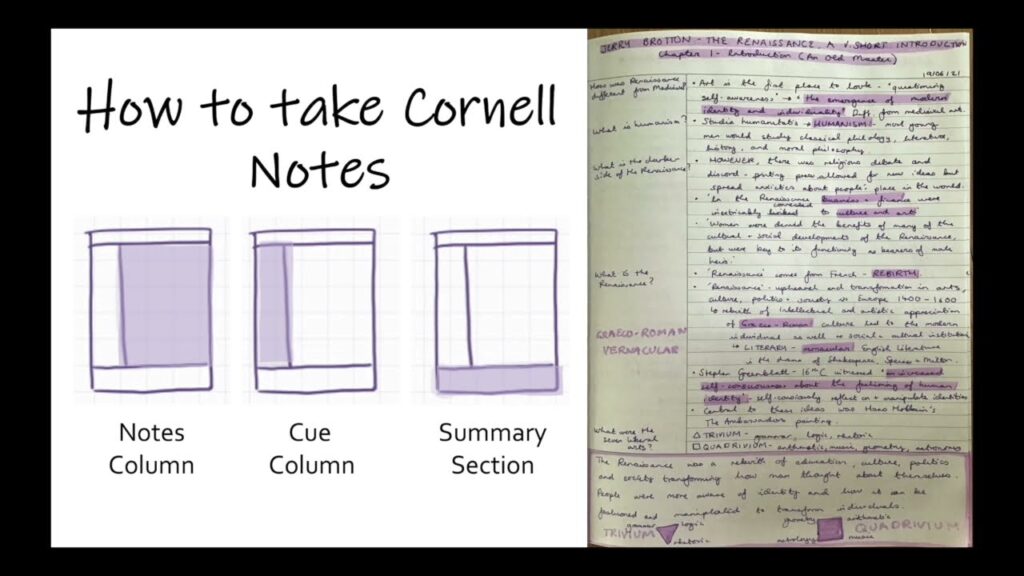Contents
- 1 Exploring the World of Note-Taking Templates and Formats
- 2 The Importance of Effective Note-Taking: Enhancing Productivity and Retention
- 3 Understanding Different Types of Note-Taking Templates
- 4 Printable Note-Taking Templates: Organize Your Thoughts on Paper
- 5 Digital Note-Taking Formats: Harnessing the Power of Technology
- 6 Techniques to Improve Your Note-Taking Skills: From Mind Maps to Cornell Method
- 7 Finding the Perfect Note-Taking Template: Examples and Ideas
- 8 Streamlining Information: How Note-Taking Templates Help You Stay Organized
- 9 Boosting Efficiency: Note-Taking Formats for Specific Tasks and Activities
- 10 Conclusion: Empower Your Note-Taking Journey with Templates and Formats
- 11 FAQs About Note-Taking Templates and Formats
Exploring the World of Note-Taking Templates and Formats
Are you tired of messy, disorganized notes that leave you feeling overwhelmed and unproductive? Look no further! In this article, we will delve into the fascinating world of note-taking templates and formats that can revolutionize the way you capture and retain information.
Note-taking is an essential skill that plays a crucial role in enhancing productivity and information retention. Whether you’re a student trying to ace your exams or a professional looking to stay organized, effective note-taking can be a game-changer.
But where do you start? With so many different methods and techniques out there, it can be overwhelming to find the right approach. That’s where note-taking templates and formats come in. They provide a structured framework that guides your note-taking process, making it easier to organize your thoughts and extract key information.
In this article, we will explore the various types of note-taking templates, from printable options that allow you to put pen to paper, to digital formats that leverage the power of technology. We will also dive into different note-taking techniques, such as mind maps and the Cornell Method, that can help you improve your skills and make your notes more effective.
So, if you’re ready to take your note-taking game to the next level, join us on this journey as we uncover the secrets of note-taking templates and formats. Get ready to boost your productivity, enhance your retention, and unlock the full potential of your note-taking journey. Let’s dive in!
The Importance of Effective Note-Taking: Enhancing Productivity and Retention
Taking effective notes is a crucial skill that can significantly enhance productivity and retention. Whether you are a student, professional, or simply someone who wants to stay organized, having a solid note-taking system can make a world of difference. Here are some reasons why effective note-taking is so important:
1. Capturing and Organizing Information
One of the primary purposes of note-taking is to capture and organize information. By taking notes, you can condense complex ideas, key points, and important details into a concise and organized format. This allows you to easily review and refer back to the information later on.
2. Enhancing Understanding and Retention
When you actively engage in the process of taking notes, you are more likely to understand and retain the information. By summarizing and paraphrasing the content in your own words, you are actively processing and internalizing the material. This helps to solidify your understanding and improve long-term retention.
3. Facilitating Active Learning
Taking notes during lectures, presentations, or meetings encourages active learning. Instead of passively listening or reading, note-taking requires you to actively engage with the material. This promotes critical thinking, analysis, and synthesis of information, leading to a deeper understanding of the subject matter.
4. Improving Organization and Time Management
Effective note-taking can also help improve organization and time management skills. By using templates and formats, you can create a structured system for organizing your notes. This allows you to easily locate and review specific information when needed, saving you time and effort.
5. Personalization and Customization
Note-taking templates and formats provide a framework that can be customized to suit your individual needs and preferences. Whether you prefer using bullet points, mind maps, or the Cornell Method, you can adapt the format to match your learning style and maximize your note-taking efficiency.
By recognizing the importance of effective note-taking and utilizing various templates and formats, you can enhance your productivity, improve your understanding and retention of information, and stay organized. In the next section, we will explore different types of note-taking templates that can help you organize your thoughts on paper.

Understanding Different Types of Note-Taking Templates
When it comes to note-taking, one size does not fit all. Different individuals have different preferences and learning styles, which is why understanding the various types of note-taking templates is crucial. Here, we will explore some of the most common formats and their benefits.
1. Outline Format
- This format is ideal for capturing and organizing information in a hierarchical structure.
- It allows you to break down complex topics into smaller, more manageable sections.
- Example:
– I. Introduction
– A. Definition of note-taking templates
– B. Importance of effective note-taking
– II. Types of note-taking templates
– A. Printable templates
– B. Digital formats
2. Cornell Method
- The Cornell Method is a popular template that promotes active engagement and critical thinking.
- It involves dividing your note paper into three sections: a narrow left column, a wider right column, and a bottom section.
- Example:

3. Mind Maps
- Mind maps are visual representations of ideas and concepts, making them perfect for brainstorming and organizing thoughts.
- They typically start with a central idea or topic and branch out into subtopics and related concepts.
- Example:

4. Chart or Table Format
- This format is useful for comparing and contrasting information, such as pros and cons or cause and effect relationships.
- It allows for a clear and concise presentation of data.
- Example:
| Pros | Cons |
|---|---|
| Easy to read | Limited space |
| Organized layout | Not suitable for lengthy notes |
Understanding these different types of note-taking templates empowers you to choose the one that best suits your needs and learning style. Whether you prefer a structured outline, a visually appealing mind map, or a systematic chart, there is a template out there for you.
With a solid understanding of note-taking templates, we can now delve into the world of printable note-taking templates and how they can help you organize your thoughts on paper.
Printable Note-Taking Templates: Organize Your Thoughts on Paper
When it comes to note-taking, many people still prefer the traditional pen and paper method. Printable note-taking templates provide a structured framework that helps organize thoughts and ideas effectively. These templates come in various formats and layouts, catering to different note-taking styles and preferences.
Benefits of Printable Note-Taking Templates
- Structured Organization: Printable templates provide a clear structure that guides note-takers in organizing their thoughts. Whether it’s a simple bullet point format or a more complex Cornell method template, having a predefined structure helps in maintaining coherence and clarity in note-taking.
- Visual Appeal: Printable templates often come with visually pleasing designs that make note-taking more enjoyable. Colorful headers, borders, and icons can help categorize information and make key points stand out, making it easier to review and revise notes later.
- Flexibility: Printable templates can be customized to suit individual needs and preferences. Whether you prefer a minimalist design or a more detailed layout, there are countless options available online that can be tailored to your specific requirements.
Popular Printable Note-Taking Templates
- Cornell Method: This template is divided into three sections – a narrow left column for cues, a wider right column for notes, and a bottom section for summarizing key points. The Cornell method is particularly useful for reviewing and studying notes efficiently.
- Mind Maps: Mind maps are visual diagrams that help organize information in a non-linear manner. Starting with a central idea, branches and sub-branches are drawn to represent related concepts. Mind maps are great for brainstorming, connecting ideas, and visualizing relationships between different topics.
- Outlines: Outlines provide a hierarchical structure for note-taking, with main topics and subtopics arranged in a logical order. This format is ideal for capturing the main ideas and supporting details of a lecture or reading material.
By utilizing printable note-taking templates, individuals can enhance their note-taking experience and improve their overall productivity. These templates provide a framework for organizing thoughts, making key points stand out, and customizing the layout to suit individual preferences. In the next section, we will explore digital note-taking formats and how they can further enhance the note-taking process.
Digital Note-Taking Formats: Harnessing the Power of Technology
In today’s digital age, note-taking has evolved beyond pen and paper. With the advancements in technology, digital note-taking formats have become increasingly popular and offer a wide range of benefits. Here, we will explore some of the most effective digital note-taking formats and how they can enhance your productivity and organization.
1. Evernote
Evernote is a versatile note-taking app that allows you to create and organize notes in various formats, including text, images, audio recordings, and even web clippings. It offers features like tags, notebooks, and search functionality, making it easy to find and retrieve your notes. Additionally, Evernote syncs across devices, ensuring that your notes are accessible wherever you go.
2. Microsoft OneNote
Microsoft OneNote is another powerful digital note-taking tool that offers a range of features for organizing your thoughts and ideas. It allows you to create notebooks, sections, and pages, providing a hierarchical structure for your notes. You can also insert images, audio, and video files, as well as draw and annotate directly on your notes. OneNote seamlessly integrates with other Microsoft Office applications, making it a popular choice for professionals and students.
3. Google Keep
Google Keep is a simple yet effective note-taking app that syncs with your Google account. It offers a clean and intuitive interface, allowing you to create color-coded notes, checklists, and reminders. You can also add images and audio recordings to your notes. Google Keep is particularly useful for capturing quick thoughts and ideas on the go.
Digital note-taking formats provide numerous advantages over traditional pen and paper. They allow for easy organization, quick searchability, and seamless syncing across devices. Whether you prefer the versatility of Evernote, the hierarchical structure of OneNote, or the simplicity of Google Keep, there is a digital note-taking format that suits your needs.
In the next section, we will explore techniques to improve your note-taking skills, including mind maps and the Cornell Method. These techniques, combined with the use of note-taking templates and formats, will empower you to take more effective and organized notes.
Techniques to Improve Your Note-Taking Skills: From Mind Maps to Cornell Method
Taking effective notes is a skill that can greatly enhance your learning and productivity. There are various techniques and methods you can employ to improve your note-taking skills, and in this section, we will explore some popular ones.
Mind Maps
Mind mapping is a visual note-taking technique that allows you to organize your thoughts in a non-linear and creative way. It involves starting with a central idea or topic and branching out with related subtopics and ideas. Mind maps are great for brainstorming, organizing complex information, and making connections between different concepts. They can be created on paper or using digital tools such as mind mapping software.
Cornell Method
The Cornell Method is a structured approach to note-taking that helps you summarize and review information effectively. It involves dividing your note paper into three sections: a narrow left-hand column for cues and keywords, a wider right-hand column for main ideas and details, and a bottom section for summarizing the main points. This method encourages active listening and engagement during lectures or while reading, as well as providing a clear structure for reviewing and studying your notes later.
Outlining
Outlining is a linear note-taking method that involves organizing information in a hierarchical structure. You start with the main topic or idea and then create subheadings and sub-points to break down the information further. Outlining is particularly useful for organizing and summarizing lectures, textbooks, or articles. It allows you to see the overall structure of the information and easily locate specific details.
Bullet Points
Bullet points are a simple and efficient way to take notes, especially during fast-paced lectures or when you need to capture key information quickly. Using bullet points allows you to condense information into concise and easily scannable points. You can use bullet points in combination with other note-taking techniques, such as mind maps or outlines, to create a clear and organized overview of the information.
By utilizing these various note-taking techniques, you can improve your ability to capture and retain information effectively. Experiment with different methods and find the ones that work best for you in different situations. In the next section, we will explore examples and ideas for finding the perfect note-taking template.

Finding the Perfect Note-Taking Template: Examples and Ideas
When it comes to note-taking, finding the right template can make a world of difference in how effectively you capture and organize information. Here are some examples and ideas to help you find the perfect note-taking template:
1. Cornell Method
- This popular note-taking format divides your page into three sections: a narrow left column for cues, a wider right column for notes, and a bottom section for summaries.
- The Cornell Method is great for organizing information and reviewing key points, as it encourages active engagement and reflection.
2. Mind Maps
- Mind maps are visual diagrams that help you connect ideas and concepts. They start with a central topic and branch out into subtopics and related ideas.
- This format is perfect for brainstorming, planning projects, and making connections between different pieces of information.
3. Outline Format
- An outline format is a hierarchical structure that breaks down information into main points and subpoints.
- This format is useful for organizing complex topics, creating an overview of a subject, or preparing for exams or presentations.
4. Bullet Journaling
- Bullet journaling is a flexible system that combines a planner, journal, and to-do list. It allows you to create your own customized templates and layouts.
- This format is great for tracking goals, habits, and tasks, as well as jotting down quick notes and ideas.
5. Digital Templates and Apps
- With the rise of technology, there are numerous digital note-taking templates and apps available.
- Examples include Evernote, Microsoft OneNote, and Google Keep, which offer various templates and features to suit different note-taking needs.
By exploring these different note-taking templates and formats, you can find the one that aligns with your preferences and enhances your productivity and retention. Whether you prefer a traditional pen-and-paper approach or a digital solution, there is a template out there that can help you streamline your note-taking process.
In the next section, we will delve into the importance of streamlining information and how note-taking templates can help you stay organized.
Streamlining Information: How Note-Taking Templates Help You Stay Organized
When it comes to note-taking, staying organized is key. Without a proper system in place, it’s easy to get overwhelmed with information and lose track of important details. This is where note-taking templates come in handy. They provide a structured framework that helps you streamline information and keep your notes organized. Here’s how note-taking templates can help you stay on top of your game:
1. Categorizing Information
One of the main benefits of using note-taking templates is that they allow you to categorize information effectively. Whether you’re taking notes for a meeting, a lecture, or a research project, having designated sections for different topics or subtopics can make it easier to find information later on. For example, a template with separate sections for key points, supporting details, and action items can help you quickly locate and review important information.
2. Visualizing Relationships
Note-taking templates can also help you visualize relationships between different ideas or concepts. For instance, a mind map template allows you to create a visual representation of interconnected ideas, making it easier to understand complex topics and identify patterns. Similarly, a flowchart template can help you map out a process or sequence of events, making it easier to follow and remember.
3. Promoting Active Engagement
Using note-taking templates can also promote active engagement during the note-taking process. For example, the Cornell Method template encourages you to actively summarize and reflect on the material as you take notes. By dividing your page into sections for key points, cues, and summaries, this template prompts you to actively engage with the information and think critically about its relevance and implications.
4. Enhancing Review and Retrieval
Finally, note-taking templates can greatly enhance your review and retrieval process. By organizing your notes in a structured manner, you can quickly locate specific information when you need it. This can be particularly helpful when studying for exams or when referencing notes for a project. With a well-organized template, you can easily review key points, identify gaps in your understanding, and revise your notes accordingly.
In conclusion, note-taking templates are a powerful tool for staying organized and maximizing the effectiveness of your note-taking. They allow you to categorize information, visualize relationships, promote active engagement, and enhance review and retrieval. By using these templates, you can streamline your note-taking process and ensure that you have all the information you need at your fingertips. In the next section, we will explore specific note-taking formats for different tasks and activities.

Boosting Efficiency: Note-Taking Formats for Specific Tasks and Activities
When it comes to note-taking, one size does not fit all. Different tasks and activities require different approaches to effectively capture and organize information. That’s where note-taking formats come in handy. By using specific templates tailored to your needs, you can boost your efficiency and make the most out of your note-taking experience.
Meeting Minutes Template
Taking notes during meetings can be a challenging task, especially when there are multiple participants and various topics being discussed. Using a meeting minutes template can help you stay organized and ensure that you capture all the important points. This template typically includes sections for the meeting agenda, attendees, action items, and key decisions made. By using this format, you can easily refer back to the meeting minutes and track progress on action items.
Lecture Notes Template
When attending lectures or presentations, it’s crucial to have a note-taking format that allows you to capture key points, examples, and any additional information provided by the speaker. One effective format for lecture notes is the Cornell Method. This method involves dividing your paper into three sections: a narrow left-hand column for cues or main ideas, a wider right-hand column for detailed notes, and a bottom section for summarizing the main points. This format helps you organize your thoughts and makes it easier to review and study later on.
Research Notes Template
When conducting research, it’s important to keep track of your findings and sources. A research notes template can help you stay organized and ensure that you have all the necessary information at hand. This template typically includes sections for the research question, methodology, key findings, and references. By using this format, you can easily refer back to your research notes and avoid missing any important details.
By using specific note-taking formats for different tasks and activities, you can streamline your information and enhance your productivity. Whether it’s taking meeting minutes, capturing lecture notes, or conducting research, having a template that suits your needs can make a significant difference in your note-taking journey. In the next section, we will explore the importance of finding the perfect note-taking template and provide examples and ideas to help you get started.
Conclusion: Empower Your Note-Taking Journey with Templates and Formats
Note-taking is an essential skill that can greatly enhance productivity and retention. By using effective note-taking templates and formats, you can streamline your information, boost efficiency, and stay organized.
Embrace the Power of Templates
Templates provide a structure for your notes, making it easier to organize your thoughts and find information quickly. Whether you prefer printable templates or digital formats, there are countless options available to suit your needs.
Experiment with Different Formats
Don’t be afraid to try different note-taking formats to find what works best for you. From mind maps to the Cornell Method, each technique offers a unique way to capture and retain information. Explore these methods and adapt them to fit your personal style.
Find Inspiration in Examples and Ideas
If you’re feeling stuck or uninspired, seek out examples and ideas for note-taking templates. There are numerous resources available online, including websites, blogs, and social media platforms, where you can find creative and innovative templates to try.
Stay Organized and Streamline Information
One of the key benefits of using note-taking templates is the ability to stay organized. By categorizing and structuring your notes, you can easily locate information when you need it and avoid the frustration of searching through a jumbled mess of papers or digital files.
Tailor Templates to Specific Tasks and Activities
Different tasks and activities may require different note-taking formats. Whether you’re attending a lecture, conducting research, or planning a project, consider using templates specifically designed for those purposes. This will help you stay focused and efficient in your note-taking.
In conclusion, note-taking templates and formats are powerful tools that can enhance your note-taking journey. By embracing the power of templates, experimenting with different formats, finding inspiration in examples and ideas, staying organized, and tailoring templates to specific tasks, you can empower yourself to take better notes and improve your productivity and retention. So, go ahead and explore the world of note-taking templates and formats – your future self will thank you!
FAQs About Note-Taking Templates and Formats
Can note-taking templates really improve my productivity?
Absolutely! Note-taking templates provide structure and organization to your note-taking process, allowing you to capture and review information more efficiently. By using templates, you can save time and enhance your productivity by focusing on the content rather than the formatting.
Are digital note-taking formats better than printable templates?
The choice between digital and printable note-taking formats depends on your personal preferences and needs. Digital formats offer the advantage of easy editing, syncing across devices, and searchability. On the other hand, printable templates provide a tangible and tactile experience, allowing for more flexibility and creativity in organizing your thoughts.
Which note-taking technique should I use with templates?
There are various note-taking techniques that can be used with templates, such as the Cornell Method, mind maps, and the outline method. It’s important to experiment with different techniques and find the one that suits your learning style and the type of information you’re capturing. Templates can be customized to accommodate different note-taking techniques.
Where can I find examples of note-taking templates?
There are numerous resources available online where you can find examples of note-taking templates. Websites like Pinterest, Evernote, and Trello offer a wide range of templates that you can download and customize to fit your specific needs. Additionally, you can create your own templates using software like Microsoft Word or Google Docs.

0 Comments